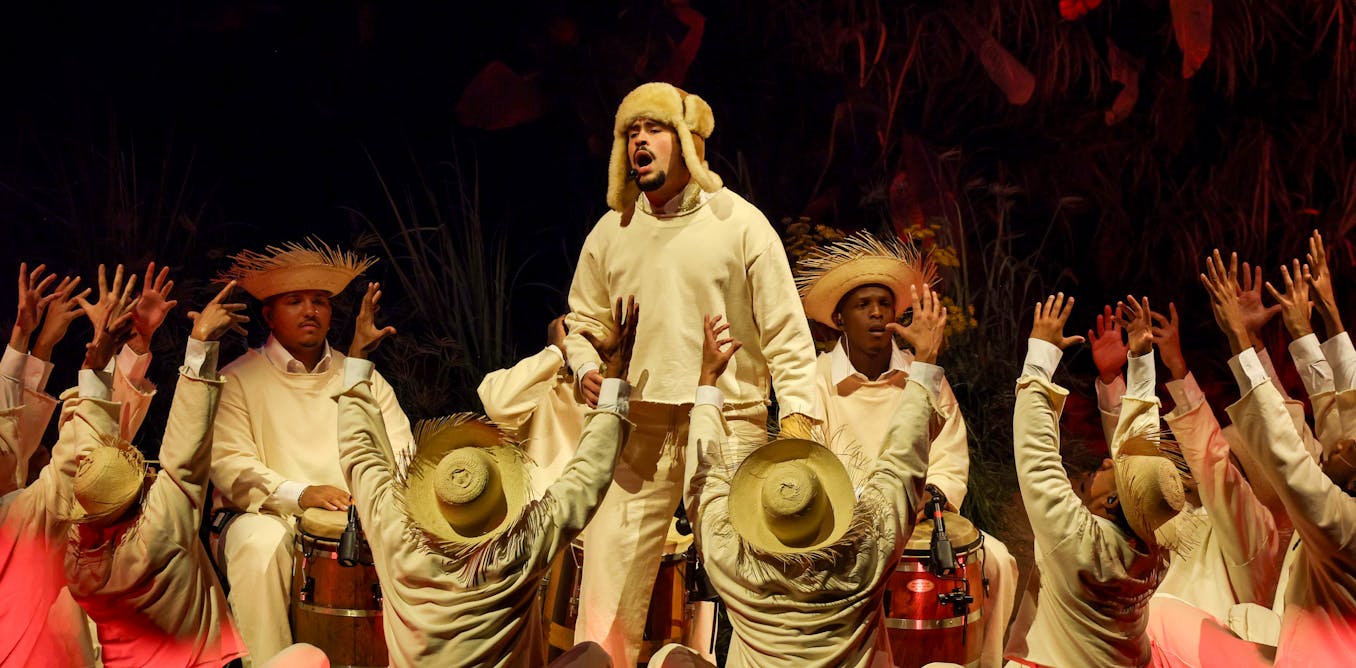As curator at Manchester Museum for 18 years, I’ve helped create a new exhibition, Wild, that showcases some incredible projects that are bringing plants and animals back from the brink of extinction, healing the land and restoring hope.
Often, the story of wildlife loss and climate change can seem overwhelming, so I’m excited about highlighting solutions that tackle some of the negative ways people influence nature. From June 5 2024 to June 1 2025, this exhibition brings these stories to life, through a rich selection of plants and animals from the near-extinct purple emperor butterfly that thrives at Knepp, an estate in West Sussex, England, to wolves making a dramatic return to Yellowstone National Park in the US.
The Wild team and I have chosen objects, films and photographs that highlight some of the most inspiring ways people are rewilding landscapes, from community action to protect green spaces in the city of Manchester to restoring the ancestral lands and practices of previously colonial land in south-west Australia by the Noongar people. By inspiring awe and wonder, the exhibition gives glimpses of how nature can thrive when given the opportunity.
The word “wild” means different things to different people and, in terms of rewilding, what works in one place may not work in another. But all the projects featured in Wild have a fresh approach to biodiversity loss and embrace a brighter future where people and nature thrive.
Isle of Arran
A velvet swimming crab (pictured above) crawls through stunning pink-purple maerl – a type of hard seaweed – on the seabed in Lamlash Bay, where the marine ecosystem has flourished. A decade-long campaign by the Community of Arran Seabed Trust culminated in Scotland’s first No Take Zone where no fish or shellfish can be taken from the water, seabed or shore, in 2008. This is a response to the effects of overfishing and dredging that led to the collapse of the marine ecosystem around the bay.
The thriving maerl beds of Lamlash Bay are a sign of a healthy seabed. These habitats support abundant wildlife such as crabs and shellfish and act as nursery areas for commercial species, such as cod, scallops and pollock. Maerl grows very slowly, around 1mm per year, but over time they can create complex habitats that rival those of coral reefs. In unprotected areas, maerl is easily damaged by seabed dredging and trawling and because of their slow growth, it takes a long time to recover.
In just ten years, this marine ecosystem has started to recover with both seabed biodiversity and the size and abundance of commercial species increasing.
Knepp
The Knepp Estate is a trailblazing 3,500-acre rewilding project in West Sussex where the reintroduction of Tamworth pigs has transformed the landscape through turning over the soil and adding dung. By grazing the lush vegetation, just seven pigs have created conditions for increased biodiversity, such as the rare purple emperor butterfly. Knepp is now a breeding hotspot for nightingales and turtle doves.
Knepp Castle Estate
For 17 years, landowner Charlie Burrell tried to farm this land but found it impossible to compete with new, industrialised farms on better soils. In 2002, inspired by European rewilding projects, he began a new more regenerative approach.
At Knepp pigs, cattle, deer and horses churn up the ground and trim back plants, stopping trees from taking over. Their dung restores the soil by adding nutrients. These grazers and browsers create dynamic new habitats for a wide range of plants and animals. By introducing grazers and then taking a hands-off approach, there has been an increase in biodiversity.
Yellowstone
Yellowstone National Park in the US is 2.2 million acres (almost half the size of Wales). This park played a pivotal role in the birth of “fortress conservation”, the controversial idea that wildlife thrives best when isolated from people. This saw the forced removal of Indigenous people from the land in preference for creating and protecting an area of wilderness.
In 1926, the last wolf pack was systematically killed in the park. Conservationists realised that the removal of wolves had knock-on effects on the ecosystem. In the 1990s, the government decided to reintroduce wolves into Yellowstone. This affected local communities and their relationships with wildlife.

Jim Paeco, the National Park Service
Now, wolves help restore the ecological balance of this area by reducing the number of elk grazing willow on the riverbanks. This provides more food for beavers, which create dams and enrich wetlands. This photo hints at the more complex ecosystems that are now developing in Yellowstone.
The presence of wolves divides opinion, but while they were once portrayed as the scourge of wildlife, they’re now viewed by many as a force for good.
Urban Manchester
Cities are not just full of people, they are also home to a diverse range of species: some we notice and like, others we notice and don’t like, and others we simply ignore.
Green cities are attractive, good for our health and wellbeing, and can become more liveable in a changing climate. Manchester aims to encourage nature to thrive.

congerdesign/Pixabay, CC BY
These dandelions encroaching onto our streets and alleyways are a source of joy to some while others find them messy. Some people see dandelions as weeds and a home to rats.
Sometimes scruffy places that are good for nature are not ones people feel comfortable with. In making green spaces that are good for people to use, we sometimes lose the natural wildness and the wildlife that was there already.
Wild can offer hope. It is about relationships between people and the natural world so it matters what wild means and how it is done. This exhibition aims to encourage people to rethink what “wild” means to them, to find inspiration in messy city centre spaces and to celebrate the abundance of nature when it is given space to thrive.

Don’t have time to read about climate change as much as you’d like?
Get a weekly roundup in your inbox instead. Every Wednesday, The Conversation’s environment editor writes Imagine, a short email that goes a little deeper into just one climate issue. Join the 30,000+ readers who’ve subscribed so far.

The post “Four photos that show the potential of rewilding nature” by David Gelsthorpe, Curator of Earth Sciences, University of Manchester was published on 06/04/2024 by theconversation.com


































